Jazz Age Social Dancing ("The Modern Dances")
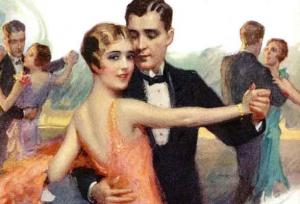 In the Jazz Age, nearly everyone danced, so they did dances almost anyone could do.
In the Jazz Age, nearly everyone danced, so they did dances almost anyone could do.
Generally, when people think about the dances of the Jazz Age (the 1920s & 30s), they bring to mind exuberant youth dances like the Charleston or Lindy Hop, or the theatrical dances of Fred and Ginger.
What Fred & Ginger did was theater and spectacle, and was never intended to be an accurate representation of how ordinary folks danced. Countless examples of normal, workaday social dancing can be seen in movies of the period but not being done by exhibition dancers like Fred and Ginger. If you want to see how it was really done, look at the folks in the background or characters who are dancing to move the story along rather than to show off their skills.
The most common misconception however is our tendency to assume that everyone, regardless of age, social status, ethnicity or geography was dancing the latest fad youth dance of the moment: be it the Charleston, the Black Bottom, Collegiate Shag or Lindy Hop. Given the complexity and physical demands of these dances, this defies simple logic; and any review of the films of the time will show that these youth dances had a definite place, but they were danced by a minority of the total dancing population - and even those who danced them did not limit themselves to those dances (unlike many current dancers).
The Forbidden Ragging Dances
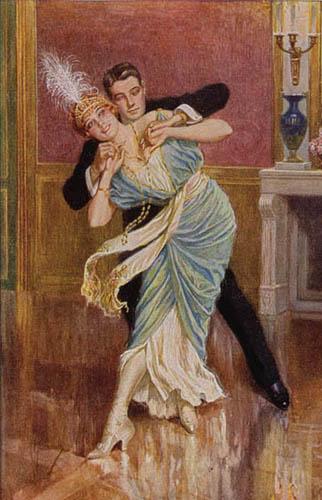 I am compiling a list of "forbidden" dances of the Ragtime Era (roughly 1890-1920). The list below comes entirely from primary sources: lists of dances named in actual city statutes, lists of dances "Not allowed in this respectable establishment" and in one case, dances we know we shouldn't be doing, but we're doing them anyway - come on down.
I am compiling a list of "forbidden" dances of the Ragtime Era (roughly 1890-1920). The list below comes entirely from primary sources: lists of dances named in actual city statutes, lists of dances "Not allowed in this respectable establishment" and in one case, dances we know we shouldn't be doing, but we're doing them anyway - come on down.
Respectable society was shocked and appalled by the dances of the young (as they generally are) and provided us with a wonderful set of lists of exactly what they disapproved of, usually lumping them together under the term "Ragging dances". Some of these are well documented for those who want to dance them today. Others are a bit more perplexing, and may have been a brief fad in a particular place, but never quite caught on. Generally they are variations, novelty steps or moves, on a basic One-Step or Two-Step pattern.
Since there was no "National Society for the Clarification of Ragtime" one can generally not be entirely sure what, for example, was meant by "Hoochy-Mootchy". I suspect that many of these found their way onto a forbidden list when some officious official went to a dance hall, saw something that offended him and asked the first person he met "What's that called". So, what we have is what some random kid happened to think some dance move was called in a particular dance hall at a particular moment in time. In reality, one variation may go under multiple names, and one name may be applied to multiple different variations. It was a merry mess back then at the moment of creation.
I suspect that the more likely scenario is that they didn't ask anyone and perhaps had little or no evidence that kids were dancing these particular dances in their town. They just found someone else's "Banned Dances" list in a newspaper and used it for their own, perhaps adding a few that they overheard their kids mentioning - but in all cases have very little sense of what any of them actually were. These lists are an interesting artifact, but can't really be taken as definitive evidence of the presence of a particular dance in a particular place at a particular moment in time.
The first set are the dances I found mentioned repeatedly, sometimes with fines and jail time involved. The Tango is an interesting case. It started out as a shocking dance and a serious moral hazard, but quickly became respectable as it was embraced by high society, so that by the early 20s, it was being looked on nostalgically as a pleasant dance kids should be doing instead of that evil Jazz (the bogyman that took over the job of corrupting youth from Ragtime around 1920). The most egregious offender seems to have been the Turkey Trot, with it being rumored that Woodrow Wilson canceled his inaugural ball out of fear of Turkey Trots causing a national scandal (he denied it, but canceled the ball anyway). There was even a bit of national debate, with defenders of the Turkey Trot arguing that it could be danced in a respectable manner, but unfortunately frequently wasn't.
The bottom section is dances called out in sheet music of the time that may, or may not have actually been "a thing".
Finally, there's a video with film clips from the time, to give you a sense of what was going on.
At the very bottom of this, I have provided a list of my sources. If you have any additional primary sources I could use to expand the list, please let me know.
The Top Offenders (repeated mentions)
Tango
Turkey Trot
Bunny Hug
Grizzly Bear
Texas Tommy
Some Thoughts on Men and Clothes at a Jazz Age Event
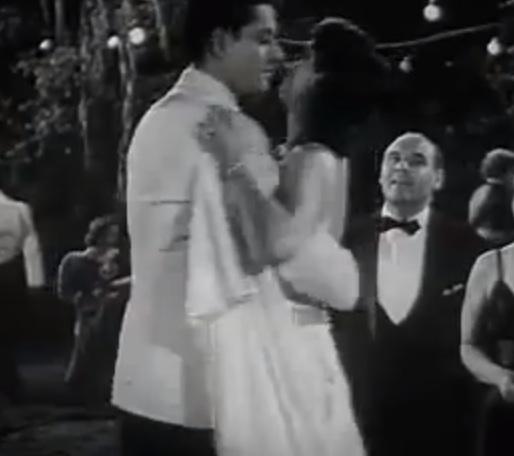 In looking through a few hundred photos of the most recent "Avalon Ball", my curmudgeonly soul was agitated by the sight of many, many men at a formal sort of event with their coats off, with hats on their heads, and sometimes with coats off AND hats on their heads.
In looking through a few hundred photos of the most recent "Avalon Ball", my curmudgeonly soul was agitated by the sight of many, many men at a formal sort of event with their coats off, with hats on their heads, and sometimes with coats off AND hats on their heads.
I personally hate to play the role of clothing police, but with the thought that at least some of those men might have adhered to the rules of Jazz Age (1920s-'40s) clothing etiquette if only they had known what they were, I will lay out some quick guidelines to help inform those who feel motivated to try.
Hats
Gents should remove their hats on the dancefloor. This is hard, fast rule at a high-tone event, and even less than high-tone dance halls tried to raise the tone by getting guys to remove their hats. This rule seems to have broadly applied outdoors as well. I have numerous photos in my collection of men dancing outdoors with their hats off. (More on historical hatiquette)
When outdoors and not dancing, hats were generally worn; but were often removed by the better-bred when greeting a lady.
Coats
It was a rule of "polite society" that a gentleman wore a coat in the presence of a lady - especially on the dancefloor or the dinner table. The coats rule would be very strong at a high-tone event or at public events like dance hall or community dances in urban settings. It might be a little less pervasive in rural settings.
Why was it "polite" for a man to wear a coat? Cast your mind back to a time before antiperspirants when a man in shirtsleeves would very likely be a man with big old sweat stains on his shirt. By putting on his coat he thereby hides said wet spots and perhaps dulls his odor a bit. So, for you men who say "I can't wear a coat, it's hot", I refer you back to your sturdy, hearty grandfathers, who thought "I must wear a coat, it's hot". I have some sympathy for today's men who (unlike their grandfathers) have gone through their lives never having learned how to sacrifice comfort for decorum; but I would posit that you may be able to keep your coat on longer than you think. I would suggest removing it when you are actually feeling overheated rather than instantly as soon as you settle in to an event.
If the event is going for a sense of elegance, all will benefit from your keeping your coat on - looking more like a gentleman than a bartender in a saloon.
Set Dancing and Eye Contact
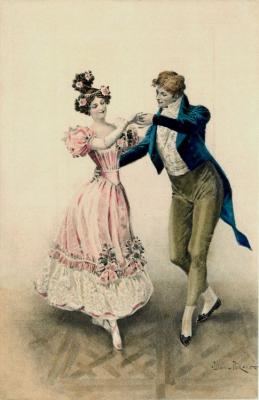 I recently attended a Regency-themed English Country Dance in a place far from home. It was a beautiful historic venue, the music was good, everyone was well dressed and the dancers were capable, but there was something lacking, something that left me unsatisfied. It became especially clear what it was when it was remarked upon by one of the local ladies: almost nobody made eye contact.
I recently attended a Regency-themed English Country Dance in a place far from home. It was a beautiful historic venue, the music was good, everyone was well dressed and the dancers were capable, but there was something lacking, something that left me unsatisfied. It became especially clear what it was when it was remarked upon by one of the local ladies: almost nobody made eye contact.
We went through our figures, took hands on cue and even did some fancy steps from time to time, but almost every time, as I took hands with another person, my eyes were looking at the side of her head while her attention was elsewhere.
This really brought home to me how essential this was: that eye contact in a set dance, whether it was English Country Dance, Contra Dance, Quadrilles, Square Dancing, Scottish Country Dance etc., is not a minor stylistic detail. It is key. In my personal reckoning, the most important thing is correctly following the figure and the music (nothing works if you aren't where you need to be) and the second, and still essential piece, is eye contact.
This is what makes it a "social dance". The whole point of dancing in a group is connecting with the other members of that group. If you hit all your marks and perform all your mechanical functions when you are supposed to do them, while keeping your eyes fixed ahead; you are not undermining the working of the dance, but you are off in your own world. You are dancing with yourself. The group is dancing together, while you are not fully present. You are just an anonymous cog in the machine, while those who make eye contact are fully present and are connecting with one another. Further, since those who make eye contact are, as I said, fully present, they are better able to coordinate their movements with the other dancers - which makes even the mechanical parts of the dance work more smoothly.
Making a Spectacle of Themselves: The Dancing Flappers
In the Roaring 20s, something new happened. "Nice girls" who were not professional performers, alone or with other girls, danced in front of the whole room.
Remembering the Centennial of the End of the Great War
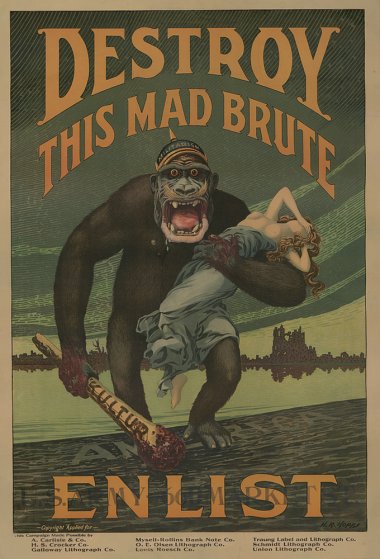 On November 11th, 2018, we will reach the centennial of one of the most portentous dates in human history. On that day, in 1918, the guns fell silent and the killing stopped and World War One, known as “The Great War” before another world war came along, came to an end.
On November 11th, 2018, we will reach the centennial of one of the most portentous dates in human history. On that day, in 1918, the guns fell silent and the killing stopped and World War One, known as “The Great War” before another world war came along, came to an end.
It’s a problematic anniversary. It was one of the defining moments in world history, and it seems like it should be commemorated, but how to do it?
In 1914, there were four emperors who went to war, in Russia, Germany, Austria-Hungary and Turkey. After 1918, Russia was in a bloody civil war from which would emerge the Soviet Union, Germany was setting up a fragile democracy, Austria-Hungary was smashed into its constituent parts, and Turkey’s Ottoman Empire was divided up by Britain and France in a way that set the stage for today’s troubled Middle East.
Further, the vindictive and arbitrary terms of the Treaty of Versailles led directly to the rise of the Nazis, and the even more murderous Second World War.
In the “victorious” powers, victory was really just relief and exhaustion. A whole generation was decimated in France and Britain, and there was a general sense not of victory, but of failure – a sense that the old-fashioned values of service, sacrifice, loyalty and patriotism that had motivated those young men to march off to war had all been a lie. The “lost generation” could not really see how it had all been worth it.
Even in America, which had been involved in active fighting for only a few months, the war had its impact. Those few months had been a literal hell for the Americans who actually saw combat, and the Doughboys returned not only with a broader, less provincial view of the world; but with an angry cynicism much like their French and British brothers.
This also coincided with the Spanish Influenza, which killed in the space of a year, even more people than the war.
So, now this centennial is upon us. What do we do about it?
A Rant: Dancing at Roaring Twenties Events: We're Doing it Wrong
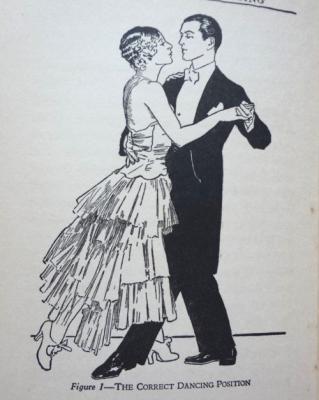 I generally try to keep my tone light, and avoid major rants online, but I think perhaps it’s time to go full curmudgeon regarding dancing at “Roaring Twenties” events.
I generally try to keep my tone light, and avoid major rants online, but I think perhaps it’s time to go full curmudgeon regarding dancing at “Roaring Twenties” events.
While we moderns do a moderately good job of recreating the dances of the Victorian era in a Victorian-themed event, or Swing dances in a 1940s-themed event, we are consistently terrible at presenting even a semblance of the actual dances of the Roaring Twenties at a Twenties-themed event (or Twenties-themed movie, but that's a different rant)
There is a pervasive attitude of:
I don’t know.
I don’t know I don’t know.
I don’t really care anyway.
Roaring Twenties events that I have seen fall into a few general categories.
The Baz Luhrmann Twenties
In this sort of event, the women will often wear fringed flapper dresses, and might do a few Charleston steps (always solo), but the musical options are generally more of the electronic/hip-hop/electro-swing variety; and the general ambiance is more like that of a rave. Music is generally DJ driven. This is the default setting for organizations that don’t generally do historical themes (or care a fig about history), but want to capitalize on the “Great Gatsby” movie’s popularity or the dawn of a new '20s decade.
The Lindy Hop Twenties
The Swing community has embraced the Twenties, but since many Swing dancers see the world through Lindy-colored glasses, they put on their Jazz Age glad rags – and then just dance a standard Lindy, Shag or Balboa. They may toss in a Charleston, since it is congenial to a Swing approach to dancing, but they are generally fuzzy about the fact that anything but the Charleston was actually danced in the Twenties. The Twenties is essentially just a theme to superimpose on what they already do anyway - and what they do is Swing as it had evolved by the mid-'30s. Late '20s Proto-Swing is well documented in sources like the widely available 1929 "After Seben" clip with Shorty George; and while there's a clear connection to what was to come, it is clearly different. Further, I would like to suggest that just because Shorty George was doing it in Harlem, we should not assume, without further evidence, that it was common practice South of 111th Street, let alone the remaining 99.99999 percent of America.
Mrs Murphy's Waltz - A Rediscovered Family Treasure
Found in the Murphy family papers: a Waltz from 1880 by a great grandmother of a member of the Social Daunce Irregulars committe: the Once Again Waltz by Mrs. R. G. Murphy (nee Ellie Jameson). We asked Dean Mora to work it up and, for the first time in over a century, here it is.

